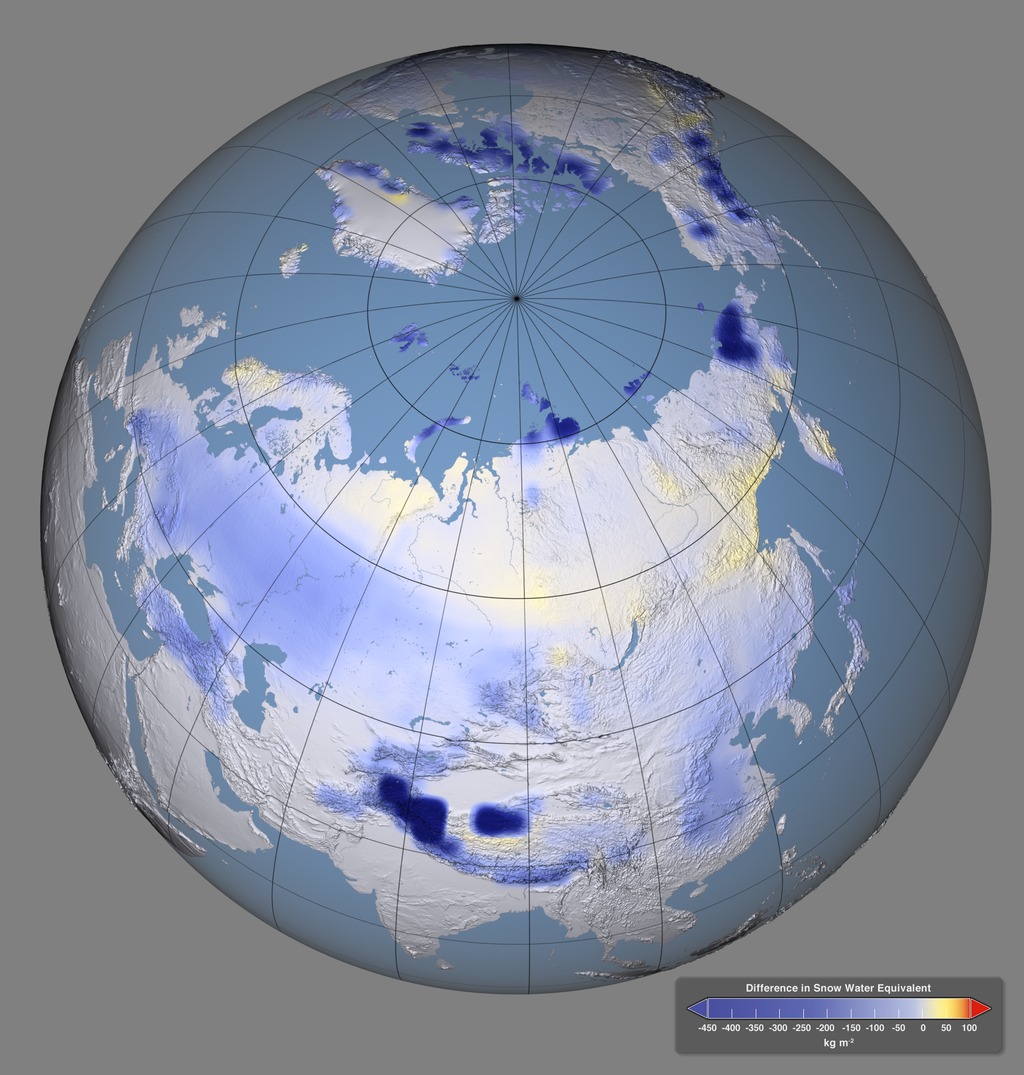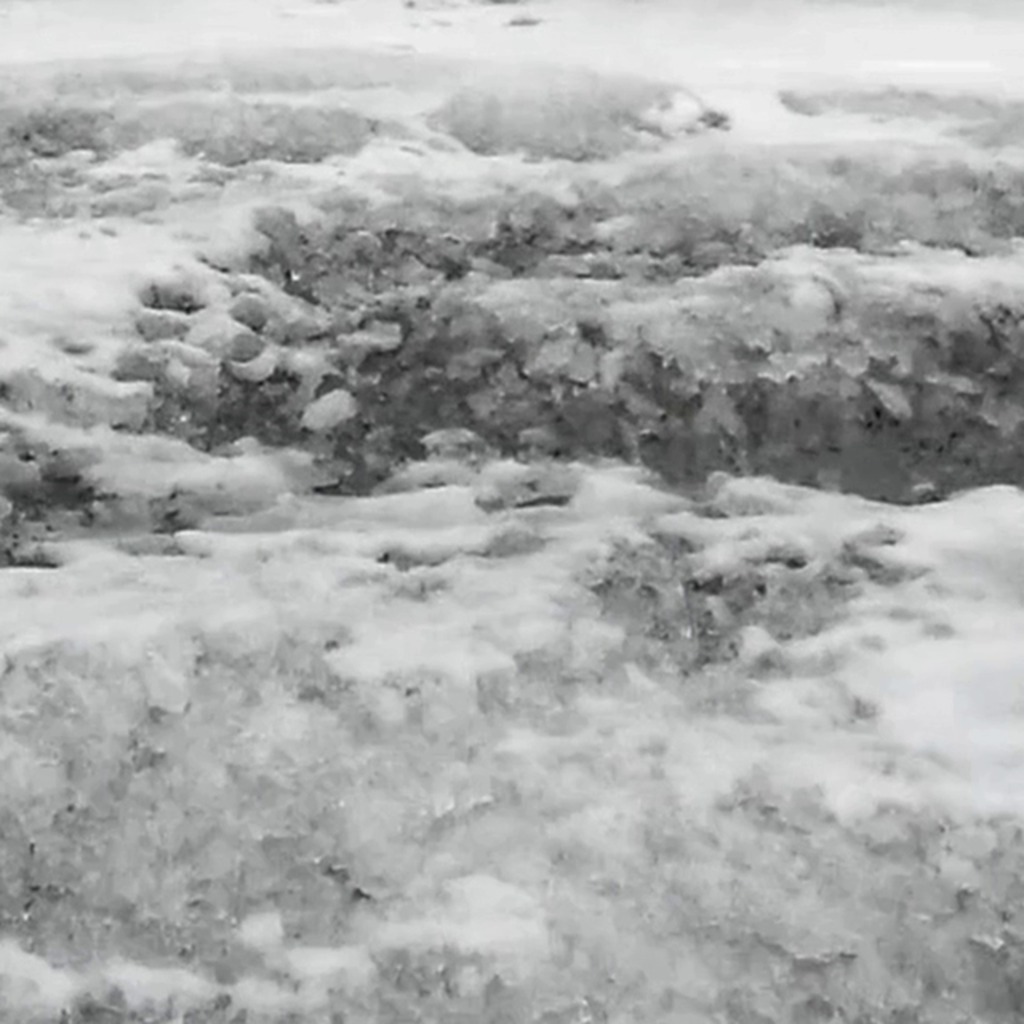Scientists Link Earlier Melting Of Snow To Dark Aerosols
Tiny particles suspended in the air, known as aerosols, can darken snow and ice causing it to absorb more of the sun’s energy. But until recently, scientists rarely considered the effect of all three major types of light-absorbing aerosols together in climate models.
In a new study, NASA scientists used a climate model to examine the impact of this snow-darkening phenomenon on Northern Hemisphere snowpacks, including how it affects snow amount and heating on the ground in spring.
The study looked at three types of light-absorbing aerosols – dust, black carbon and organic carbon. Black carbon and organic carbon are produced from the burning of fossil fuels, like coal and oil, as well as biofuels and biomass, such as forests.
With their snow darkening effect added to NASA’s GEOS-5 climate model, scientists analyzed results from 2002 to 2011, and compared them to model runs done without the aerosols on snow. They found that the aerosols indeed played a role in absorbing more of the sun’s energy. Over broad places in the Northern Hemisphere, the darkened snow caused some surface temperatures to be up to 10 degrees Fahrenheit warmer than it would be if the snow were pristine. As a result, warmer, snow-darkened areas had less snow in spring than they would have had under pristine snow conditions.
According to the study, dust’s snow darkening effect significantly contributed to surface warming in Central Asia and the western Himalayas. Black carbon’s snow darkening effect had a larger impact primarily in Europe, the eastern Himalayas and East Asia. It had a smaller impact in North America. Organic carbon’s snow darkening effect was relatively lower but present in regions such as southeastern Siberia, northeastern East Asia and western Canada.
“As we add more of these aerosols to the mix, we are potentially increasing our overall impact on Earth’s climate,” said research scientist Teppei Yasunari at NASA’s Goddard Space Flight Center in Greenbelt, Maryland.
Research: Impact of snow darkening via dust, black carbon, and organic carbon on boreal spring climate in the Earth system
Journal: Geophysical Research: Atmospheres, June 15, 2015.
Link to paper: http://onlinelibrary.wiley.com/doi/10.1002/2014JD022977/full
Here is the YouTube video.
A video featuring NASA scientist Teppei Yasunari and his research that looks into the snow darkening effect using the GEOS-5 model.
For complete transcript, click here.

A photograph of little sand dunes of a few centimeters on top of snow in Inner Mongolia at 42.5N, 112.5E. Image taken on January 15, 2010.
Credit: Stephen G. Warren, University of Washington.

A photograph of melting snow accelerated by Asian dust on Mt. Tateyama, Japan. Image taken on April 26, 2015.
Credit: Teruo Aoki, Meteorological Research Institute.

A photograph of the extreme dust deposition from the deserts of the Colorado Plateau onto the Colorado Rockies snowpack in 2009. Taken from the high point of the Senator Beck Basin in the San Juan Mountains, it captures the extent of the impact of darkening in which the snow albedo dropped to about 30%, more than doubling the absorption of sunlight.
Credit: S. McKenzie Skiles, Snow Optics Laboratory, NASA/JPL.

A GIF optimized for posting on Twitter.
Credit: Stephen G. Warren, University of Washington; Teruo Aoki, Meteorological Research Institute.

A GIF optimized for posting on Twitter.
Credit: Dark Snow Project.

A GIF optimized for posting on Twitter.
Credit: Dark Snow Project.

A GIF optimized for posting on Twitter.
Credit: Dark Snow Project.

This image shows how the reduced albedo of the snow from dust, black carbon and organic carbon depositions (the "snow darkening effect") changed net solar radiation at the surface in boreal spring.

This image shows how the reduced albedo of the snow from dust, black carbon and organic carbon depositions (the "snow darkening effect") changed net solar radiation at the surface in boreal spring. A colorbar reflects the magnitude of the change.

This image shows how the reduced albedo of the snow from dust, black carbon and organic carbon depositions (the "snow darkening effect") alters difference in snow water equivalent through increased springtime melt.

This image shows how the reduced albedo of the snow from dust, black carbon and organic carbon depositions (the "snow darkening effect") alters difference in snow water equivalent through increased springtime melt. A colorbar reflects the quantities of the difference.
Credits
Please give credit for this item to:
NASA's Goddard Space Flight Center
-
Scientists
- Teppei J. Yasunari (USRA)
- Kyu-Myong Kim (NASA/GSFC)
-
Interviewee
- Teppei J. Yasunari (Hokkaido University)
-
Data visualizer
-
Cindy Starr
(Global Science and Technology, Inc.)
-
Cindy Starr
(Global Science and Technology, Inc.)
-
Producers
- Joy Ng (USRA)
- Kayvon Sharghi (USRA)
-
Narrator
- Joy Ng (USRA)
-
Support
- Stephen Warren (University of Washington)
- Thomas Painter (NASA/JPL CalTech)
- Jason E. Box (GEUS)
- Peter Sinclair (Dark Snow Project)
- Teruo Aoki (Meteorological Research Institute)
- Randal D. Koster (NASA/GSFC)
Missions
This page is related to the following missions:Series
This page can be found in the following series:Tapes
The media on this page originally appeared on the following tapes:-
The Snow Darkening Effect
(ID: 2015053)
Friday, June 19, 2015 at 4:00AM
Produced by - Liam Krauss (Hughes STX)
Release date
This page was originally published on Tuesday, July 21, 2015.
This page was last updated on Wednesday, May 3, 2023 at 1:49 PM EDT.


